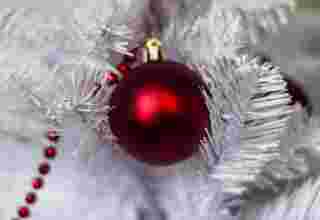Brits have revealed the most elusive animals they have never seen in real life – including dormice, beavers and otters.
But the nocturnal nightjar and tiny pine marten topped the list of critters Brits have never glimpsed while out and about.
A poll of 2,000 adults found 85 per cent have never seen an otter in the wild and 87 per cent haven’t spotted a beaver before.
Other creatures adults haven’t seen in their natural habitats include the dormouse (87 per cent), muntjac deer (82 per cent) and pipistrelle bat (84 per cent).
Grass snakes remain unseen by 71 per cent, while 76 per cent haven’t set eyes on a tawny owl.
It also emerged one in three were clueless deer could be found in cities, while more than half (56 per cent) didn’t know bats were native to the UK, according to the research commissioned by Samsung.
jQuery(document).ready(function($) {
// We only want these styles applied when javascript is enabled
$(‘.gal_content’).css(‘display’, ‘block’);
// Initialize Advanced Galleriffic Gallery
var gallery = $(‘#thumbs_65921_3’).galleriffic({
delay: 0,
numThumbs: 0,
preloadAhead: 0,
enableTopPager: false,
enableBottomPager: false,
imageContainerSel: ‘#slideshow_65921_3’,
controlsContainerSel: ‘#controls_65921_3’,
captionContainerSel: ‘#caption_65921_3’,
loadingContainerSel: ‘#loading_65921_3’,
renderSSControls: true,
renderNavControls: false,
playLinkText: ”,
pauseLinkText: ”,
enableHistory: false,
autoStart: false,
enableKeyboardNavigation: true,
syncTransitions: false,
defaultTransitionDuration: 300,
onTransitionOut: function(slide, caption, isSync, callback) {
slide.fadeTo(this.getDefaultTransitionDuration(isSync), 0.0, callback);
caption.fadeTo(this.getDefaultTransitionDuration(isSync), 0.0);
},
onTransitionIn: function(slide, caption, isSync) {
var duration = this.getDefaultTransitionDuration(isSync);
slide.fadeTo(duration, 1.0);
// Position the caption at the bottom of the image and set its opacity
var slideImage = slide.find(‘img’);
caption.fadeTo(duration, 1.0);
},
onPageTransitionOut: function(callback) {
//this.hide();
setTimeout(callback, 100); // wait a bit
},
onPageTransitionIn: function() {
var prevPageLink = this.find(‘a.prev’).css({‘opacity’: ‘0.3’ , ‘display’ : ‘inline-block’, ‘cursor’ : ‘default’});
var nextPageLink = this.find(‘a.next’).css({‘opacity’: ‘0.3’ , ‘display’ : ‘inline-block’, ‘cursor’ : ‘default’});
// Show appropriate next / prev page links
if (this.displayedPage > 0)
prevPageLink.css({‘opacity’ : ‘1’ , ‘display’ : ‘inline-block’, ‘cursor’ : ‘pointer’});
var lastPage = this.getNumPages() – 1;
if (this.displayedPage < lastPage)
nextPageLink.css({‘opacity’ : ‘1’ , ‘display’ : ‘inline-block’, ‘cursor’ : ‘pointer’});
this.fadeTo(‘fast’, 1.0);
}
});
/**************** Event handlers for custom next / prev page links **********************/
gallery.find(‘a.prev’).click(function(e) {
gallery.previousPage();
e.preventDefault();
});
gallery.find(‘a.next’).click(function(e) {
gallery.nextPage();
e.preventDefault();
});
});
The call to explore more
Dr Bryony Tolhurst, lecturer in





















